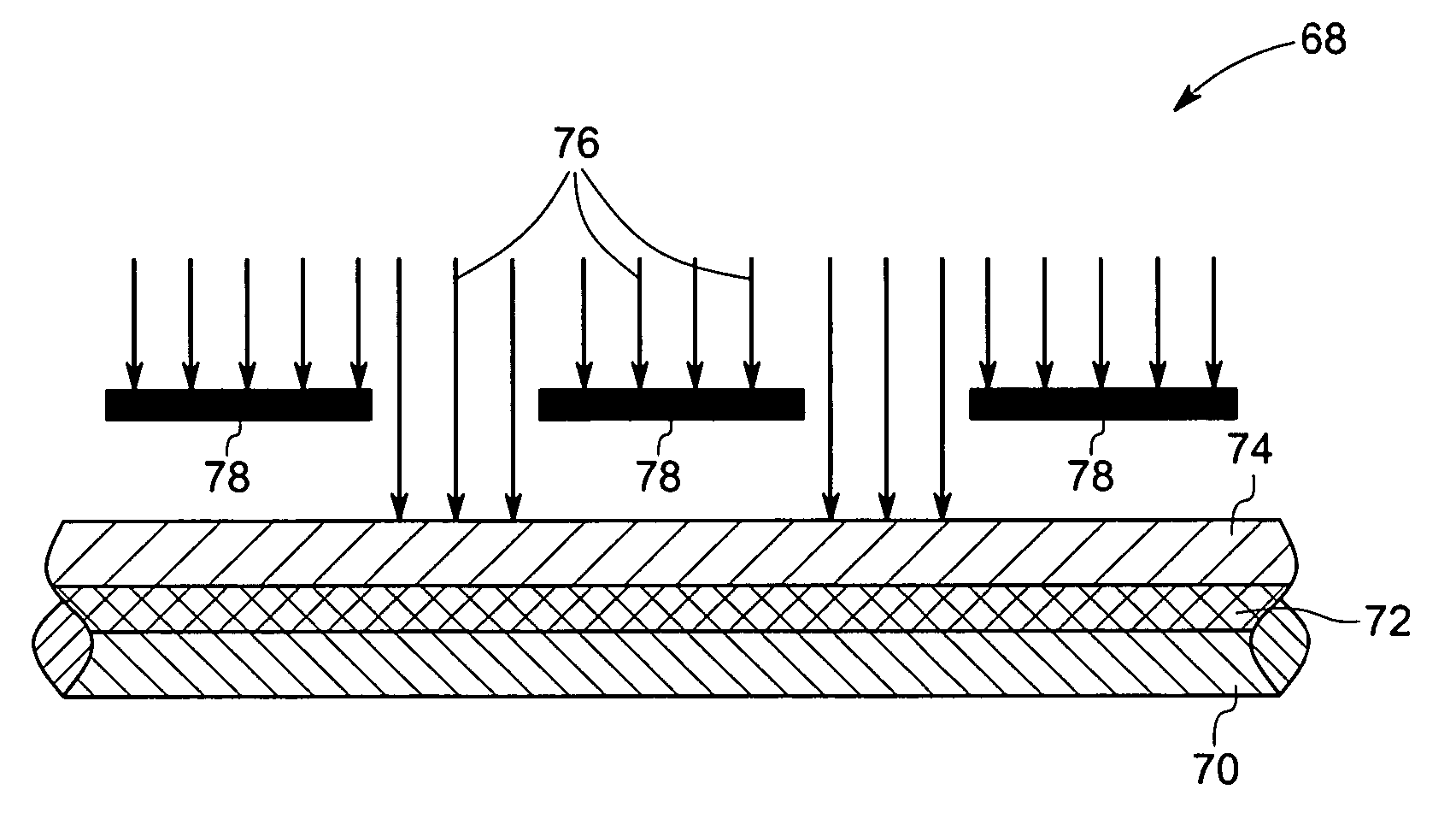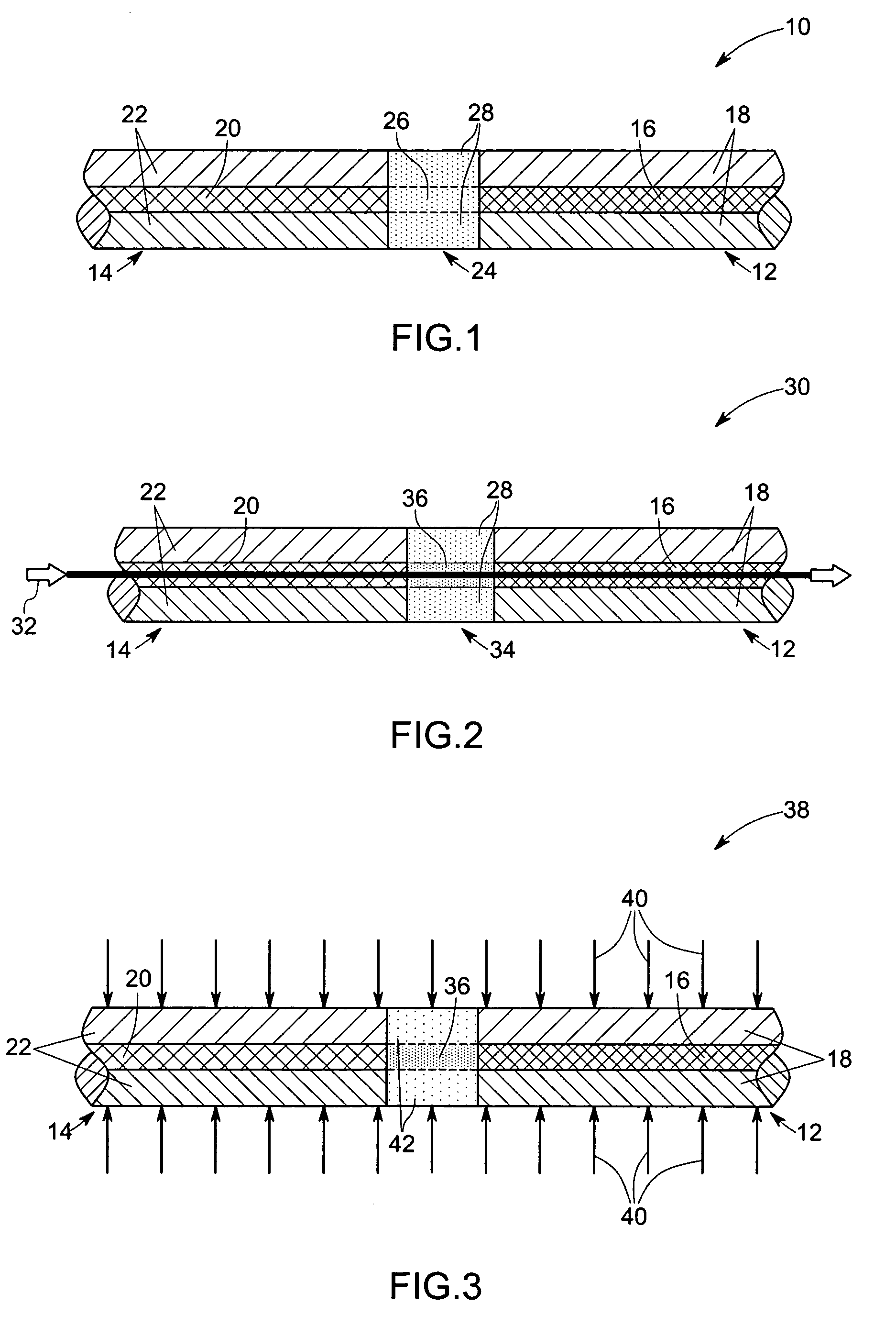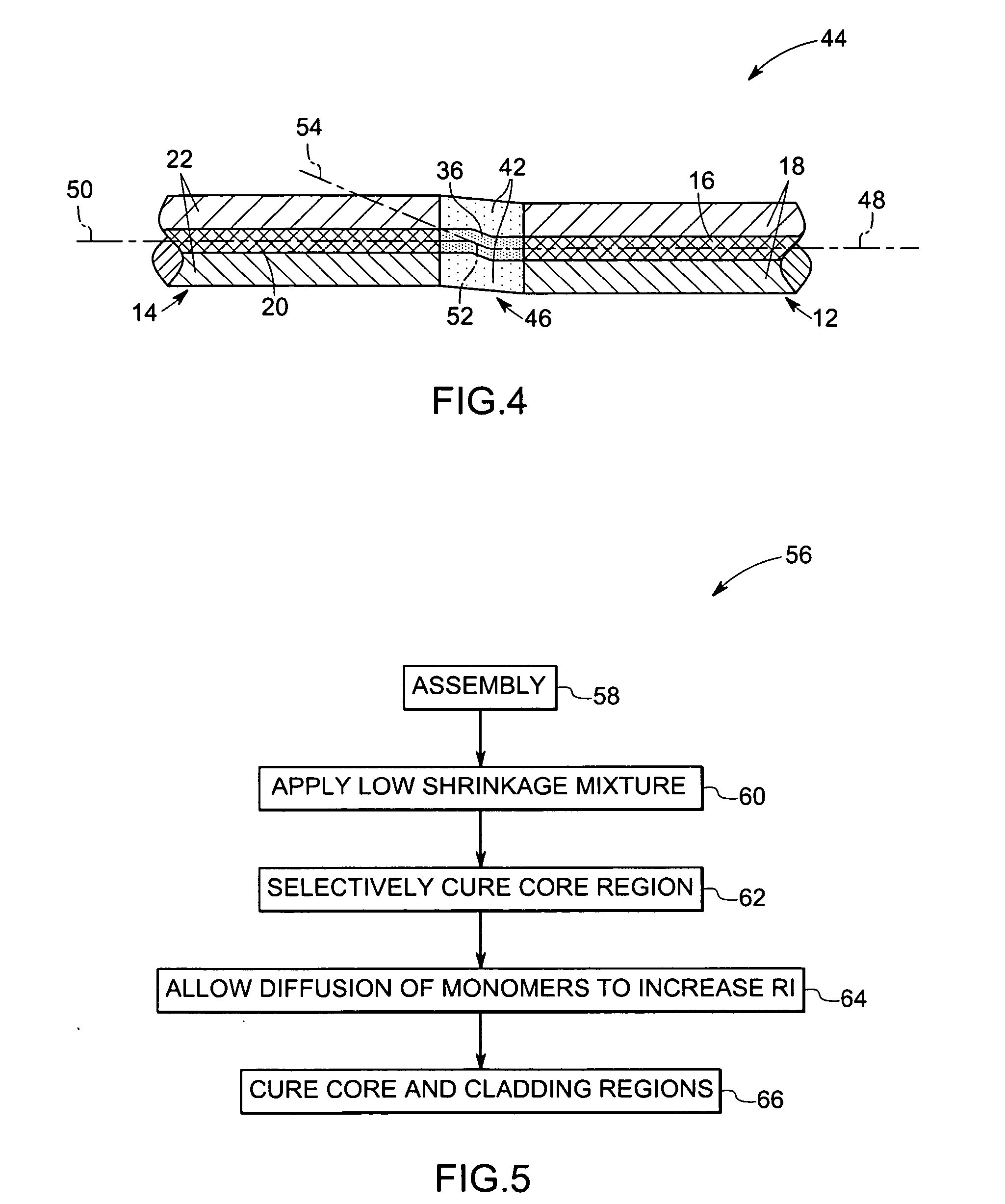Self-forming polymer waveguide and waveguide material with reduced shrinkage
- Summary
- Abstract
- Description
- Claims
- Application Information
AI Technical Summary
Benefits of technology
Problems solved by technology
Method used
Image
Examples
example 1
[0054] The following materials were blended together with mixing, followed by filtration through a 0.5 microns nominal sized filter and degassed: [0055] 10 grams ERL4221®; [0056] 20 grams ERL4299®; [0057] 3.5 grams KFLEX® 188; [0058] 15 grams EBECRYL3700®; [0059] 0.15 grams SILWET7604®; [0060] 0.8 grams CYRACURE UVI-6992®; [0061] 0.05 grams IRGACURE 819®; [0062] 0.08 grams IRGACURE 184®.
[0063] Subsequently, the mixture was exposed to radiation between 400 nanometers to 450 nanometers. Subsequently, the mixture was further exposed to a radiation from 365 nanometers. The measurement of shrinkage after curing a sample as described above indicated less than 1% shrinkage.
example 2
[0064] The following materials were blended together with mixing, followed by filtration through a 0.5 microns nominal sized filter and degassed: [0065] 10 grams ERL4221®; [0066] 20 grams ERL4299®; [0067] 15 grams SR-101®; [0068] 0.15 grams SILWET7604®; [0069] 0.8 grams CYRACURE UVI-6992®; [0070] 0.05 grams IRGACURE 819®; [0071] 0.08 grams IRGACURE 184®. [0072] 0.5 gr CXC-1612
[0073] The mixture was coated onto a silicon wafer substrate to form a homogeneous, thin film of about 25 microns thick. A portion of the film was exposed to a first radiation having a wavelength in the range of from about 400 nanometers to about 450 nanometers. Subsequently, the already exposed portion of the film was exposed to a second radiation having a wavelength of 365 nanometers. The film was then baked ramped form 80° C. to 190° C. over an hour and held for 30 minutes at that temperature, then cooled voer 30 minutes back to 80° C. Refractive Index analysis showed that the regions exposed to radiations ...
example 3
[0074] The following materials were blended together with mixing, followed by filtration through a 0.5 u nominal sized filter and degassed: [0075] 12 grams ERL4221®; [0076] 12 grams ERL4299®; [0077] 16 grams of hydroxy terminated cycloaliphatic polyester; [0078] 16 grams CN2252®; [0079] 0.1 grams SILWET7604®; [0080] 1.0 grams CYRACURE UVI-6992®; [0081] 0.12 grams IRGACURE 819®; [0082] 0.19 grams IRGACURE 184®.
[0083] Measurement of shrinkage for the mixture after the curing steps indicated less than 0.5% shrinkage.
PUM
| Property | Measurement | Unit |
|---|---|---|
| Shrinkage | aaaaa | aaaaa |
| Photocurable | aaaaa | aaaaa |
| Wavelength | aaaaa | aaaaa |
Abstract
Description
Claims
Application Information
 Login to view more
Login to view more - R&D Engineer
- R&D Manager
- IP Professional
- Industry Leading Data Capabilities
- Powerful AI technology
- Patent DNA Extraction
Browse by: Latest US Patents, China's latest patents, Technical Efficacy Thesaurus, Application Domain, Technology Topic.
© 2024 PatSnap. All rights reserved.Legal|Privacy policy|Modern Slavery Act Transparency Statement|Sitemap



